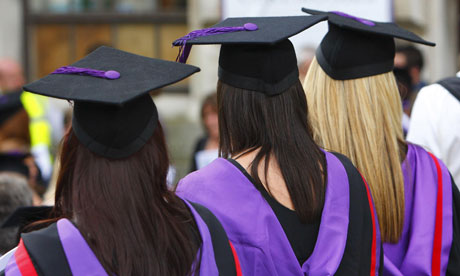An analysis of the projected lifetime earnings of
171 college majors provides a clearer picture of what one bachelor's
degree means compared to another in the labor market. And the answer can
be as much as $3.64 million.
That's the difference between what petroleum
engineering majors can expect to earn over a 40-year career ($4.8
million) and what counseling psychology majors could earn ($1.16
million). Even the lowest-paying major beats the $770,000 average
earnings of a person who holds only a high school diploma.
"Getting a (college) degree matters, but what you
take matters more," says Anthony Carnevale, director of Georgetown
University's Center on Education and the Workforce, which released its
analysis today. It's based on data on undergraduate majors across all
age groups, collected for the first time in the Census Bureau's 2009
American Community Survey and released last year. Estimates were based
on 319,081 responses from bachelor's-degree holders who work full time
over a full year.
-
MORE: Offer your tips for grads
The study is the latest, and most finely detailed
yet to demonstrate a financial payoff for college. A study this month
by American Institutes for Research found economic returns are greater
for people with degrees from highly selective colleges than from less
selective schools, but that even those degree holders were likely to
earn $230,000 more over a lifetime than a person with no more than a
high school education. (It also found that less selective schools
generate a "much better bang for the taxpayer buck.") And a Pew Research
Center study out last week found that, even after the cost of going to
college and the foregone income while in college is considered, an
education reaps greater benefits.
White workers and men fare best, the Georgetown
study found. Even in their highest paid major, electrical engineering,
blacks earn $12,000 less a year on average than Asians and $22,000 less
than whites with the same major. Women tend to hold the majority of
degrees in many of the lower-paying fields, such as education. Female
chemical engineering majors earn on average $20,000 less a year than
male counterparts.
Other details:
•Annual incomes for liberal arts and humanities
majors — think English, history, philosophy — averaged $47,000. About
40% of those majors also obtained a graduate degree, which boosted their
average earnings almost 50%.
•Four majors among the 10 with the highest
average annual earnings also are among the least popular majors,
"suggesting there's a real demand in these areas that we have yet to
meet," Carnevale says. Those are mathematics and computer science, naval
architecture and marine engineering, metallurgical engineering, and
mining and mineral engineering
Richard Fry, an economist who crunched lifetime
earnings data for the Pew report, cautions that the data can't predict
what today's students will make: "The future is inherently unknown."
Visit cew.georgetown.edu/whatsitworth for details.






















